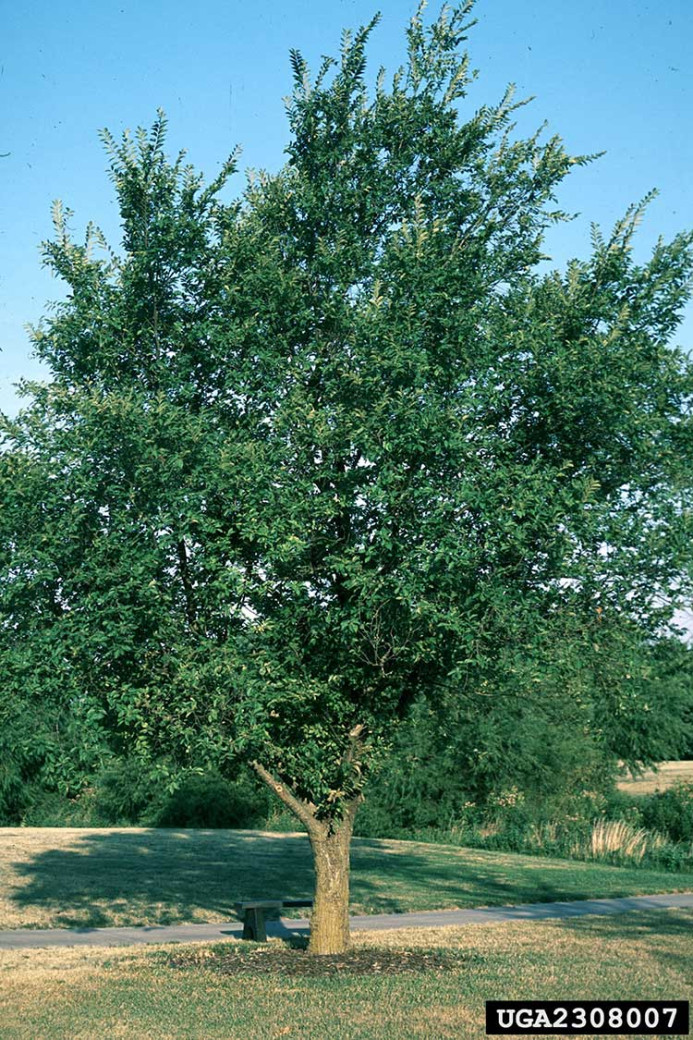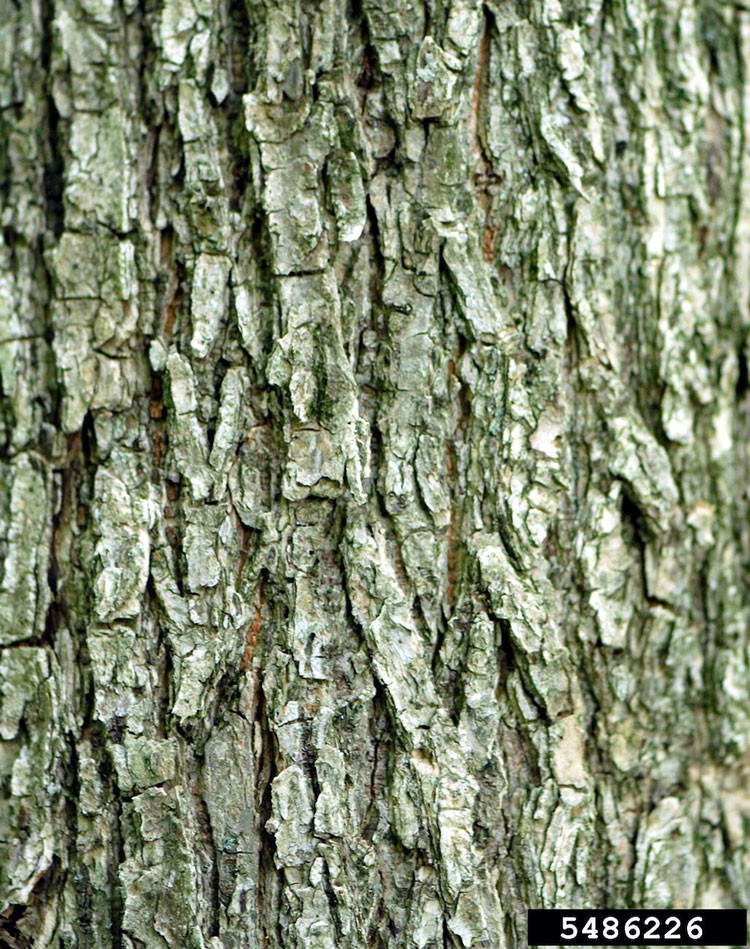Non-urgent government operations are closed December 24 to January 1, reopening January 2. See the list of services available during this time.
Report all suspect infected trees immediately to the STOPDED Hotline at 1-877-837-ELMS (3567)
Annual pruning ban in effect: April 1 to September 30
Overview
American elm (Ulmus americana) is not native to Alberta and has been planted in our communities for hundreds of years. It is often seen arching over the streets and has a distinctive umbrella-like canopy (Figure 1).
Siberian elm (Ulmus pumila) is not native to Alberta and is much less susceptible to DED. This species is similar to the American elm, but the leaves are smaller and it is known for its delicate, wispy branches and heavy seed crops (Figure 2).
Shape
American elms have tall, straight trunks. Branches start high and grow upward to form an arching shape like a vase or umbrella. Siberian elm can have a variety of forms, depending on location and pruning, ranging from a shrubbery hedge to a single tree similar to the American
Figure 1. American elm. Credit: Steven Katovich, Bugwood.org

Figure 2. Siberian elm. Credit: Patrick Breen, Oregon State University

Leaf
Oval or egg-shaped with a pointed tip. The leaf has double-serrated leaf margins (meaning the ‘teeth’ have ‘teeth’). The leaf base where it connects to the stem is asymmetrical. Elm leaves are dark green, up to 9 centimetres (3.5 inches) long and 2.5 to 5 cm (1 to 2 inches) wide. The underside of the leaf is rough because of raised veins.
Figure 3. American elm leaf shape. Credit: Paul Wray, Iowa State University, Bugwood.org

Figure 4. Siberian elm leaf shape. Credit: Patrick Breen, Oregon State University, Bugwood.org

Bud
Alternate arrangement, brown and pointed.
Bark
Deeply grooved in older trees and silver grey in color. Can often be easily broken off to observe alternating red and cream ‘wafers’ in cross-section.
Figure 5. American elm bark. Credit: Kathy Smith, Ohio State University Extension, Bugwood.org

Figure 6. Siberian elm bark. Credit: John M. Randall, The Nature Conservancy, Bugwood.org

Resources
See all DED forms and documents.
Contact
To report suspect DED symptoms or for more information, call:
STOPDED Hotline 1-877-837-ELMS (3567)
For DED compliance and enforcement issues, contact your local municipality or Agricultural Fieldman.